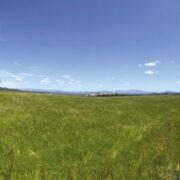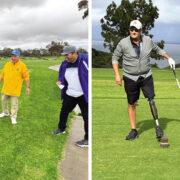How common is low back pain?
Low back pain (LBP) is extremely common, is the second most frequent reason for patients to seek medical help, and the number one cause of disability for persons 45 years old and younger. LBP accounts for about 15% of all sick leave. Lifetime prevalence (chances of getting it during one’s lifetime) is about 60-90%. Only 1% of these develop pinching of the nerve, leg pain and numbness, and only 1-3% have herniated (slipped) disc.
What causes low back pain?
The most common form (about 85%) of LBP is called Musculoskeletal Back Pain (MBP), which results from sprain, spasm or strain of the paraspinal muscles and/or ligaments on either side of the spine, and irritation of facet joints. MBP results from lack of exercise, obesity, chronic poor posture, while sitting, standing or walking, and/or wrong lifting technique. After years of abuse, the back succumbs to LBP.
What is slipped disk?
Slipped disk occurs when the disk (filled with jelly-like material for cushion) between the vertebrae (spine bones) bulges out and presses on the adjacent nerves. This commonly happens when one twists while lifting. When the herniation (bulging) of the disk is severe and the pains and numbness from the resultant pinching of the nerves are medically intractable, surgery is recommended.
What is the classification of low back problems?
The three clinical category are: (1) Potentially serious spinal condition, which is a rare cause of back pains, includes spinal tumor, infection, fracture, cauda equina syndrome (compression resulting from massive ruptured discs causing urinary and fecal incontinence, unilateral or bilateral leg weakness or pain; (2) Sciatica, nerve root compression causing pain along the course of the sciatic nerve from the hip area to the legs and feet; and (3) nonspecific back symptoms, low back pains that suggest neither of the two classification described above.
Does smoking increase the prevalence?
Yes, studies have shown that the incidence of low back pains, sciatica and spinal degenerative disease is higher among smokers compared to nonsmokers. Smoking also delays bone healing, not to mention it is the major cause of lung cancer and cardiovascular diseases, like stroke and heart attack.
Can cancer elsewhere cause back pains?
Yes, cancer in another organ in the body, like of the prostate, breast, kidney, thyroid or lung cancer, can metastasize (spread) to the spine and cause back pains.
How common is spontaneous relief?
About 90% of patients with LBP will improve within one month even without treatment, and among those with sciatica, 80% will eventually recover with or without surgery. Therefore, conservative is the initial treatment of choice.
What is the treatment strategy for LBP?
Bed rest is usually not necessary but is an option if the pain is severe. Even so, 2 to 4 days should be max in order not to lose the benefit of physical activity. Greater part of the treatment regimen is good education about low back pains; modification of behavior and activities to tolerable level; temporary limit to lifting, and using the correct technique when lifting, no matter how light the object might be; avoidance of prolonged sitting, bending and twisting; gradual return to exercise (those who resume physical activities fare better than those who do not do exercises). Those with cauda equina syndrome and those with persistent, medically intractable pain , are candidates for surgery.
What are not effective for low back pains?
The following have been tried in the management of low back pains but scientific studies have shown that they do NOT provide the benefits they claim to have for patients with LBP: muscle relaxants, Spinal Manipulation Therapy (SMT); traction; epidural injection with steroids; Transcutaneous Electrical Nerve Stimulation (TENS); lumbar corset and support belt; biofeedback; acupuncture; and, herbal medications. Unfortunately none of the above have been found to be an effective treatment for low back pains, but the public is continuously bombarded with infomercials and marketing scams, and unwittingly many have fallen victims to them.
When is support belt useful?
Lumbar support belts when lifting something are of value as a prophylactic
measure, to prevent the development of low back pains, but they do not relieve back pains when the person already has them.
What is the proper lifting technique?
The correct way to lift an object from the floor is for the individual to sit (not bend his back) and grab the object with both hands, and slowly and evenly get up, using the knees and leg muscles, instead of the back muscles, to lifting. The back must be straight, holding the object as close to the body as possible, and avoidance of twisting the body. When picking up something from a table, or walking while carrying anything, it is also best to keep the object as close to the body as possible, to minimize strain on the muscles of the back. Push rather than pull heavy objects. Again, avoid twisting and bending.
Do lifting light objects need the same technique?
Yes, it has been shown that lifting or carrying anything, no matter how light (a glass of water or a book, etc) causes some strain on the muscles of the back, especially when the carrying arm is extended or away from the body.
What is the best position to minimize LBP?
Good posture is essential. Take frequent breaks when you have to sit for a long period of time, and move around and stretch. Wear flat shoes with low hills. If you must stand for a long time, rest one foot on a low stool, and switch foot every 5 to 15 minutes. Turn by moving your whole body rather than twisting at your waist. The best way to sit is to use chairs with low back support, maintaining a good posture, keeping the knees a little higher than the hips, with feet on a low stool. Use a swivel chair to avoid twisting. When driving a vehicle, sit straight and move seat forward for a comfortable position. Use back support. To reduce pressure on the back, the best way to sleep is on your side, with a pillow between your knees, on a firm mattress.
What exercise can strengthen the back?
Gently stretch your back muscles. Lie on your back with knees bent, and slowly raise the left knee to your chest. Press the lower back against the floor. Hold for about 5 seconds, then relax. Repeat the same exercise using the right knee. Do about 10 of these exercises for each leg. Staying active and living a healthy lifestyle are fundamental. Other exercises, like swimming, walking, etc., unless medically contraindicated, are good regimen for cardiovascular and musculoskeletal fitness.
***
Philip S. Chua, MD, FACS, FPCS, Cardiac Surgeon Emeritus in Northwest Indiana and chairman of cardiac surgery from 1997 to 2010 at Cebu Doctors University Hospital, where he holds the title of Physician Emeritus in Surgery, is based in Las Vegas, Nevada. He is a Fellow of the American College of Surgeons, the Philippine College of Surgeons, and the Denton A. Cooley Cardiovascular Surgical Society. He is the chairman of the Filipino United Network – USA, a 501(c)(3) humanitarian foundation in the United States. Email: [email protected]




